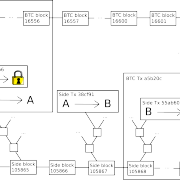The Bots Of Bitcoin
On May 6, 2010, the stock market collapsed. The Dow Jones Industrial Average, Nasdaq Composite and S&P 500 all nose-dived, losing around 9% of their value. A trillion dollars was wiped off the value of companies. Within 20 minutes, most of the losses had been regained and within 36 minutes and the event was over. Whatever hit the economy that day had nothing to do with the true state of America’s finances.
An investigation into the Flash Crash focused on the algorithms used by high-frequency traders, companies that rapidly buy and sell stocks as their computer programs spot small price differences across the market. Five years later, police arrested Navinder Singh Sarao, a small trader who was believed to have made more than $40 million during the crash. Trading from his small house in London, he was alleged to have used a computer program to rapidly place sell orders to drive down prices, cancel the orders before the trades went through, then buy the stocks at the lower rate. He wasn’t the only one to make money that day, but his actions were enough to help move the market.
The financial sector has since taken steps to prevent computers accidentally bringing down the stock market, but the 2010 Flash Crash, and others that have followed, underlie the dangers of relying on bots — or automated trading programs — to manage financial assets.
Lee’s first bot was simple: It monitored different trading platforms, looked for price differences to exploit and when the program identified an opportunity, it automatically bought Bitcoin on one platform and sold it on the other. Profits were small. Writing on a Bitcoin forum in 2012, Lee explained that “profitability on overall trading volume is a few % at best.”
Nonetheless, Lee’s simple arbitrage earned him a six-figure profit. Today’s opportunities — and the bots that exploit them — are more sophisticated. Some use an “exponential moving average” to build their rules. They look at how markets usually behave over certain periods and take action when those thresholds are exceeded. If the price of Bitcoin falls further than normal, for example, a predictive algorithm would expect it to bounce back soon and would place buy orders. Alternatively, a reactive algorithm would start selling in order to reduce losses. Both of those strategies are legitimate so while bots can take some of the strain out of rapid trading in cryptocurrency, they can’t replace thought and analysis. The trader still has to figure out how the asset is likely to behave and how defensively or aggressively they want to trade.
Setting that strategy isn’t simple, and neither is creating the bot itself. Zenbot is an open-source platform that can be downloaded from GitHub and runs on Node.js and MongoDB. You can modify the code yourself to create automatic trading rules based on your trading strategy. If none of that means anything to you, it will be something you want to avoid. Cryptotrader is a little more straightforward and has plans that start at just 0.0014 Bitcoins a month, though the maximum equity amount the bot can trade at that level is just $1,000. To move past $20,000, you’ll need to spend from 0.0109 Bitcoins a month. Leading the pack is Haasbot, a platform that’s particularly popular among professionals. With fees that start at 0.05 Bitcoins for three months and rise to 0.14 Bitcoins for three months for an advanced license, you’d need to make a lot of trades (and a lot of money) to make building the bot worthwhile.
Assessing the percentage of cryptocurrency trades made by bots rather than humans is difficult. Bitcoin is largely unregulated and companies don’t have to report their trading volumes. One report at the start of the year put the rate of automatically-made trades as high as 80%, helped by the arbitrage opportunities still present across exchanges, by cryptocurrency’s minimal transaction cost, by its 24-hour trading and by the ability to put trading servers right next to the exchange’s servers to minimize latency. Bot trading might be something for professionals rather than keen amateurs but there are now enough people dedicated to cryptocurrency to write the code that makes the trades.
The most important question is what the bots are doing to the market. Joseph Lee’s simple trading algorithm would have brought greater stability by providing liquidity to newer platforms with small trading volumes. That’s a pattern found on traditional trading platforms too. During the investigation into the 2010 Flash Crash, fail-safes built into trading algorithms were credited with helping to stop the decline by ceasing trading when movements exceeded a set level of volatility.
But cryptocurrency markets are much more volatile and harder to predict than the stock exchange. They’re also more influenced by events that bots can’t analyze, such as the announcement of a new government regulation in Beijing. The ability for hackers to break into exchanges or even to alter the code used by the bots provides another level of risk that traditional high-frequency traders don’t usually have to consider.
So the rise of bots is likely to bring some stability to cryptocurrency markets. They can help to iron out arbitrage opportunities and flatten prices across exchanges. They can act to stop flash crashes in cryptocurrency markets — and they might just cause them.
Source: forbes.com








Hinterlasse einen Kommentar
An der Diskussion beteiligen?Hinterlasse uns deinen Kommentar!